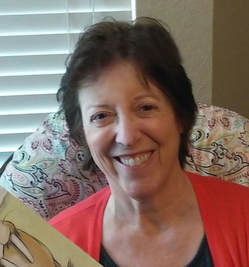 Guest Post by Lori Mortensen 24 Carrot Writing is pleased to welcome Lori Mortensen, award-winning children’s author of more than 70 books and over 350 stories and articles. If you’re like me, one of the favorite parts of a picture book is the little surprise at the end. After following the intriguing story page by page, I’m always looking forward to see how the author will wrap it up. Will the ending be ho-hum predictable, or will the author create a wonderful ending that’s often described as “unexpected, yet inevitable”? Exceptional endings not only satisfy the story problem, but they fulfill it in a surprising and unexpected way. At first, simply solving the story problem might seem like the obvious way to bring a story to a satisfying close. For example, if Sally wants a pet, she gets a pet. If Sam loses his kite, he gets it back, etc. But exceptional stories take that extra step. In my rhyming picture book, Cowpoke Clyde and Dirty Dawg that became one of Amazon’s Best Picture Books of 2013, Clyde wants to catch his dog for a bath. So, the obvious ending would be Clyde catching his ol’ dirty dawg and giving him a bath, right? However, as I wrote the story, I knew that predictable ending wouldn’t feel satisfying. There had to be more than Clyde just getting his way. As I wrote, I became excited about where the story could lead. With each successive page turn, I showed Clyde trying to catch his dog, each attempt more comical and disastrous than the last. I told myself, Clyde would get so frustrated he would …. What would he do? I wondered. 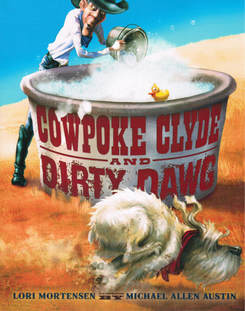 I was delighted when I instantly realized things would get so bad, Cowpoke Clyde would scrap the whole idea. Oh, no! I thought. How is Clyde going to bathe his dirty dog now? I was just as eager to find out what would happen as I hoped future readers would be. Moments later, I knew what my ending with a twist would be. Instead of Clyde actually catching his dog, he’d scrap the whole idea, then take the bath himself. Whoa! I didn’t see that coming, but it felt absolutely perfect. As Cowpoke Clyde scrubbed and crooned in the tub, Dirty Dawg joined him with a tremendous SPLASH! At this point, I realized the story wasn’t about Clyde checking off a laundry list of chores. It was about them---Cowpoke Clyde and Dirty Dawg. Once Clyde stopped trying to finagle his dog into the tub, the duo discovered that taking a bath was something they both enjoyed. I avoided a didactic ending where Cowpoke Clyde showed Dawg who was boss and turned it into a satisfying friendship story that drew Cowpoke Clyde and Dirty Dawg together. I was just as pleased with this unexpected ending as I knew the reader would be. 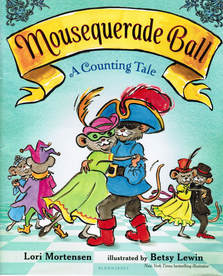 Another example is my counting picture book, Mousequerade Ball, illustrated by Betsy Lewin. In my original story, mice arrive at a ball in ascending numbers from one to 10. At the climax, a cat shows up and scares them away in descending order back to one. A fun idea, but after several rejections, I knew it needed a more satisfying ending with an unexpected twist. But what? I decided the solution rested with the cat. Instead of arriving as a threat, the cat shows up only wanting to dance. This unexpected twist gave the story a new meaning and level of satisfaction. It wasn’t simply a book that counted mice up and down. It became a story about friendship and inclusion. 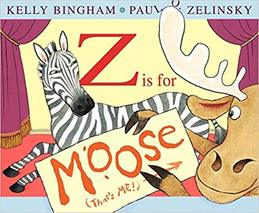 One of my favorite picture book endings with a twist is Z is for Moose by Kelly Bingham. In this story, Zebra directs alphabetical characters to their correct place on the page and Moose can’t wait to be featured with the letter “M.” However, when “M” comes along, Mouse gets the coveted spot, much to Moose’s dismay. As the alphabet continues, Moose becomes more and more distraught when it looks as if he’s never going to get a chance to fit in. Then, Kelly dazzles the reader with her own special brand of “unexpected, yet inevitable” magic. When the reader finally gets to “Z,” it reads, “Z is for Zebra’s friend, Moose.” Awww! This unexpected ending not only fulfilled Moose’s desire to be in the alphabet, but it cemented Zebra’s and Moose’s friendship in a surprising and touching way. 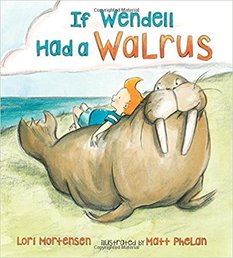 This year, my picture book If Wendell Had a Walrus hit the bookshelves. In this story, a boy named Wendell wants a walrus. Of course, the obvious ending would be Wendell getting a walrus. However, as I wrote along, a different ending came to mind. As soon as I wrote it, I knew it was the perfect ending with a whale of a twist. Would Wendell get a walrus? What do you think? So, the next time you’re puzzling over a manuscript, think about your favorite picture book endings and why they work. Did they have an “unexpected, yet inevitable” ending with a twist? Then play around. You may not find the right ending right away. It may take time to sort through all the options that spring to mind at first. But keep at it. If you do, one day an author may be writing a blog about your book and its wonderful “unexpected, yet inevitable” ending with a twist. Lori Mortensen is an award-winning children’s author of more than 70 books and over 350 stories and articles. Recent releases include If Wendell Had a Walrus, illustrated by New York Times bestselling illustrator Matt Phelan (Henry Holt), Chicken Lily, (Henry Holt), Mousequerade Ball (Bloomsbury), illustrated by New York Times bestselling illustrator Betsy Lewin, and Cowpoke Clyde Rides the Range (Clarion), a sequel to Cowpoke Clyde & Dirty Dawg, one of Amazon’s best picture books of 2013. When she’s not letting her cat in, or out, or in, she’s tapping away at her computer, conjuring, coaxing, and prodding her latest stories to life. For more information about her books, teacher activities, critique service, events, and upcoming releases, visit her website at www.lorimortensen.com.
4 Comments
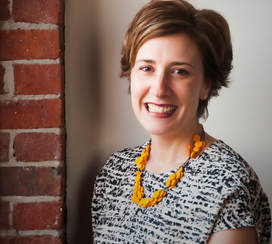 Guest Blog by Casey W. Robinson I had the pleasure of meeting Casey at the NE-SCBWI conference as she was preparing for the release of her debut picture book, Iver & Ellsworth (Ripple Grove Press, 2018). Since then I’ve been to her launch and watched the buzz of her picture book grow. We are thrilled to have Casey join us to share the lessons she learned as she introduced her debut book to the world. Welcome Casey! 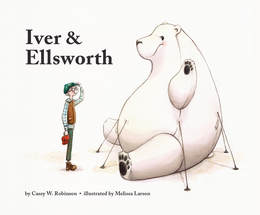 My debut picture book, Iver & Ellsworth (Ripple Grove Press), came out in May and I held two debut events to celebrate: a morning reading at the Harvard Coop Bookstore in Cambridge, MA followed by an afternoon book launch party at the Silver Unicorn Bookstore in Acton, MA. As exhilarating as it was to celebrate, I found the process of planning and anticipating these events to be a little daunting! For those of you who are looking forward to, or are in the midst of, planning your debut launch, I share some lessons learned. I’M GLAD I …
I WISH I HAD …
When it was all over, I asked my daughters to tell me their favorite part of the weekend. I expected them to say “Cookies!” They said it was seeing me so happy. “You had your really big smile on all day long, mom.” Don’t forget your book, your story, your day will also be special and significant to others who get to be a part of it. Whatever the format, whatever the size, mark this moment in time and celebrate together. HAVE FUN. You only get one debut! To learn more about Casey please visit her at www.caseywrobinson.com. To order a copy of Iver & Ellsworth go to www.indiebound.org/book/9780999024911.
Thanks for joining us Casey!  Hosted by Kelly Carey We are thrilled to welcome author Traci Sorell to 24 Carrot Writing. Traci’s debut picture book, WE ARE GRATEFUL: OTSALIHELIGA (Charlesbridge, 2018) received a starred review from Kirkus who called the book a “gracious, warm, and loving celebration of community and gratitude”. And more picture books are coming with AT THE MOUNTAIN BASE (Penguin/Kokila) in the fall of 2019 and POWWOW DAY (Charlesbridge) in the spring of 2020. Join us as we talk with Traci about her path to publication, her debut picture book, the story of how she found her agent, and how her ancestry as a member of the Cherokee Nation and her search for accurate books about her heritage fueled her writing journey. Welcome to 24 Carrot Writing, Traci! Congratulations on your debut non-fiction picture book WE ARE GRATEFUL: OTSALIHELIGA (Charlesbridge, Fall 2018)! Writers find inspiration and motivation to write from a variety of places. You have commented that you were motivated to write your book because you were struggling to find contemporary and culturally accurate books about Cherokee and indigenous people to share with your son. Can you talk about how this search turned into a desire to become an author? Wado (wah-doe)! “Thank you” in Cherokee. I am beyond thrilled for the publication of this book. I have an extensive picture book collection with many featuring Native American Nations, their cultures and traditional stories. After I had read those to my son, I thought why aren’t there more books showing Cherokee and other indigenous people in modern life. I found some, but a small amount compared to those centering life pre-1900. As a Native American Studies major in college, I most enjoyed studying history, law and politics of post-1900 life as experienced by Native Nations in the United States. After researching that there was plenty not told in children’s books (or textbooks for that matter), I realized I could be busy the rest of my life writing books and recruiting other Native creators to do the same. Your first foray into writing began as the author of legal codes, testimony for Congressional hearings, federal budget requests and grants. Once you decided to write a contemporary Cherokee story, what helped you find your picture book voice and what skills did you borrow from your grant writing days? I’m grateful for all the editing I received in my undergraduate, graduate and legal education. It helped my professional writing immensely. Writing starts out solitary, but ultimately it’s a collaborative process once it is to be shared with the world. The more trained eyes on a grant application, graduate thesis, legal code or brief and books for children, the better. I do a lot of self-editing before I give it to others to read, but my work always improves when great editors (critique partners, my agent, book editor) read it. 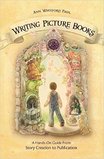 Also, I read a lot of picture books written in the last few years to learn what the market wanted. That helped me shape and edit my own voice to write sparse, lyrical text that sell in the marketplace. I benefitted from reading Ann Whitford Paul’s Writing Picture Books and connecting with published authors in my local KS-MO chapter of SCBWI who provided solid critiques and guided to me beneficial workshops to further develop my voice and craft. You have credited friends from graduate school and SCBWI for helping you find success in your writing journey. What is your networking advice to fellow authors? Networking is critical in this business. I’m a firm believer in doing homework and research on your genre(s), who publishes what you write, who else writes what you write and, if appropriate, who illustrates what you write. Then follow those folks on social media. If there’s an opportunity to meet them in person, introduce yourself, ask about their work, and strike up a conversation. It’s important to take time to make an authentic connection. There are so many generous people in this industry who will share their knowledge if you just ask. But don’t pester. Be respectful of their time and person. I would not be here without the support of others who have already established themselves in this industry. They helped me get the foundation I needed. Then I branched out from there to meet other creators across the nation. You were blessed with multiple offers for representation and with multiple offers for your book. How did you decide which offers to accept? I sold We Are Grateful: Otsaliheliga to Charlesbridge from the slush pile, which means I submitted it unagented and unsolicited. Three of the ten publishers I submitted to in December 2015 expressed interest. One of them was waiting for my answer when Karen Boss, Associate Editor at Charlesbridge, called. Their intern had read my manuscript and put in on her desk in March 2016. I had hoped that I would hear from them because they published Itse Selu: Cherokee Harvest Festival over twenty years ago. That picture book features Cherokee and English words in the text like my manuscript, and including the language is important to the story and to me personally. Charlesbridge still has that picture book in print, which also impressed me. I want We Are Grateful: Otsaliheliga to have that kind of longevity and publisher support. As for getting an agent, that process took longer. When I initially tried to query agents before and after that sale, I kept hearing, “Well, if you also want to write middle grade, get back in touch after you have a novel done.” I wanted someone to be enthusiastic about what stories I had ready to submit, which were all picture books, and not after my middle grade novel was ready. So I took a little time off. At the end of summer, I queried a few more agents. The universe must have shifted in the meantime as I received two offers of representation on the same day! When I spoke with Emily Mitchell, Wernick & Pratt Literary Agency, I knew that we would be a good fit. Her prior background as a senior editor and contracts manager at Charlesbridge met my preferred criteria of a having an editorial agent. She reps fiction and nonfiction across all genres. Exactly what I was looking for! In October 2013, I heard Emily present at the Oklahoma SCBWI conference—the first writing conference I ever attended. I wasn’t ready though at that time to be the client she was looking for; but, by the time I queried her three years later, I felt that I was. We’re a good team, both of us know our roles in this partnership. I’m very grateful. What do you wish to accomplish with WE ARE GRATEFUL: OTSALIHELIGA? 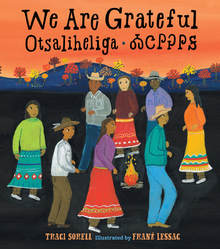 I have a couple of hopes. First, I hope that Cherokee children will enjoy seeing their contemporary culture reflected in the book and want to learn and do all the things featured in the book, including speaking our language (if they don’t already). For other children, I hope it provides them a window into a culture they may not be too familiar with because the Cherokee and other tribal nations are mostly invisible in modern U.S. culture. We’re still here, yet most children aren’t taught that we exist after 1900—either in their own homes or at school. I hope the book helps all children think about their cultures and teachings, whether that be about gratitude or some other value, and how cultivating those could be helpful to them in navigating daily life. What is your dream for yourself as an author? I have many dreams. First, I want to continue improving and deepening my craft in every book. I would like to publish a board book, a novel-in-verse, and a graphic novel in addition to my other current projects. I like the challenge of figuring out the puzzle—what is the best word, structure, or format to use. There are so many stories untold that I’ll be busy the rest of my life, working on these. I also want to ensure that Native and other marginalized children in this country are no longer invisible and accurately represented in children’s literature. There are books published in this industry every year that have not done the work necessary to get it right. That needs to stop. It is incumbent upon everyone – writer, illustrator, editor, art director, sales, marketing, management – to examine what they are putting out in the world and asking if it is accurate, will this harm young readers, etc. With my graduate and legal training, I’m used to having my work critically examined. I always consult experts and have sources for why I’ve written what I have, why the world was constructed, or characters formed this way, etc. regardless of whether it is fiction or nonfiction. My dream is to help raise awareness in this industry for other creators to have that same approach to both fiction and nonfiction works for children. As a debut author, what have you found most rewarding and surprising about the experience? So many things have been rewarding and surprising. It’s all new to me because I don’t have any professional writers in my family. I’ve been most surprised by how generous people have been in the industry. Several friends who write for adults tell me their side of the industry generally isn’t as supportive as it is in children’s literature. I’m glad I’m where I am. Another rewarding aspect has been meeting fellow Native creators – writers and illustrators. It nourishes my soul. There really is a push to get more accurate books in the hands of children and teens, so I’m doing my part to recruit talented Native folks to work in the industry. I attend Kweli’s annual Color of Children’s Literature conference in New York City each spring. The conference brings together Native and POC writers and illustrators with agents and editors. Every year, the number of Native writers and illustrators attending grows. Most of us are from different tribal nations across the continent, so it’s great to get together. Usually it’s the only time many of us are in the same place. It’s magical. How have you approached marketing your debut book? What lessons have you already learned? I am grateful to be part of Epic Eighteen, a group of debut picture book authors and illustrators with books published in 2018. We have shared marketing tips, best deals for designing/purchasing book swag, and how to handle the logistics of marketing (soliciting interviews if necessary, referring each other to bloggers, etc.) when our main focus has been on our writing. This group has relieved a lot of my anxiety. I know there are also groups for debut novelists too. I would recommend being a part of such a group. While it’s not always possible (financially or logistically), one of the things I did and highly recommend is to visit the publisher’s office in person. I went to Charlesbridge’s office in early April. I sat down separately with the marketing and the sales staff. We talked about what they were doing, what I should be doing, and I found I had a lot of information about potential sources for press release distribution or locations for sales that are pertinent to a Native American focused book that they did not have on their list. We also established a closer working relationship because we spent that time together. I’d recommend at least trying to video conference with the staff so that you make that human connection. You’re all in the same community, working to make your book as marketable and successful as possible. So putting faces, names and personalities together is always a plus in my book. Ultimately though, you will be responsible for doing most of the legwork around marketing your book through social media, being interviewed on blogs, via radio, etc. At 24 Carrot Writing we are big on goal setting. Do you set detailed writing goals, broad yearly goals or do you fly by the seat of your pants? I do set writing goals. I don’t have a daily word count or anything like that. But I do keep a list of projects that I’m working on with a timeline of when I want each completed and moving on the next phase, i.e., what needs to be drafted, what is being revised and what is on submission. Then, I also keep a list of what I want to write further down the road. Sometimes I want to write something, but my knowledge base or skill set isn’t there yet to tackle the genre. So those projects go on that last list. I also have yearly goals. I’m learning to be gentler with myself because life intervenes a lot. I’m in the sandwich generation right now. My husband and I have a young son, and we also have parents that are needing more of our help. All of them are the priority over our careers. 2018 has been a particularly challenging year so far. I’m hopeful this upcoming book launch season will be a celebratory time, but I’ll also have time to get a few more projects out the door. Regardless of whether I hit my goals or not, the key for me is to keep the faith and create. October is 24 Carrot Writing’s Trick or Book Treat Party. Would you like to celebrate with us by sharing your favorite writing trick or tip or treating your fellow writers to a book recommendation? 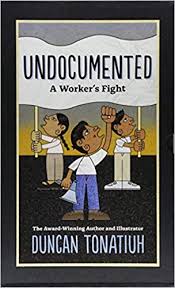 There are many books I would love to recommend, but Undocumented: A Worker’s Fight by Duncan Tonatiuh and published by Abrams is one of my favorite picture books in 2018. The narrator is a Mixteco indigenous man from Mexico who comes to the United States after his father dies. He stays with his uncle and sends money back to his mother and siblings. I LOVE that this shows that so many undocumented people here are actually indigenous folks from elsewhere on the American continents! I haven’t seen that reality reflected in other picture books. Duncan tells a very accessible story for children about this man through the context of his workplace where he and his coworkers are exploited, his personal life and his growing empowerment to address the injustice. I just love it! Plus, the story is told via the Mixtec code format in an accordion style layout and concludes with a powerful Author’s Note. So beautiful. Get to your bookstore or library and check it out now. What is up next for you? With this debut book launch, I’ve got a lot of travel for book signings and school visits coming up this fall. I’m looking forward to spending time with children and sharing the book with them. This is what I’ve been looking forward to since I wrote the story. On the publication front, since I’ve signed with Emily, we’ve sold two picture books and some shorter works (poems, chapters, short stories) in anthologies. In fall 2019, my first fiction picture book, At the Mountain’s Base, illustrated by Weshoyot Alvitre (Tongva), will be published by Kokila, the newest imprint of Penguin Random House. Then in the spring of 2020, my second one, Powwow Day, illustrated by Marlena Myles (Spirit Lake Dakota/Mohegan/Muscogee Creek) will be published by Charlesbridge. I’ve got several other projects in the works that I’m eager to share with the world when I can. To learn more about Traci visit her website at www.tracisorell.com. To purchase a copy of WE ARE GRATEFUL: OTSALIHELIGA click on the button below: Wado Traci!
24 Carrot Writing is pleased to host Andrew Jenrich, Director of the Taft Public Library in Mendon, MA. All four of us have benefited from Andrew's comprehensive knowledge of the publishing industry, as well as his ability to place "just the right book" into our hands (as well as the many library patrons' hands!). We hope you'll find his perspective on what he's acquiring, and what he hopes to acquire in the future, helpful in your writing process. 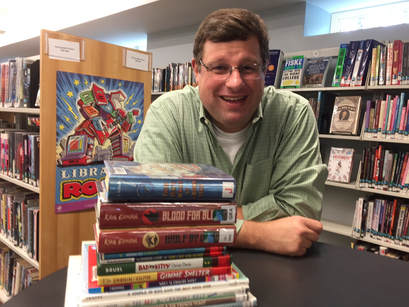 Guest Post by Andrew Jenrich As Director at the Taft Public Library one of the most rewarding tasks I have is developing the library’s book collection for children and young adults. That’s not to say it isn’t a daunting job, especially since so many new titles release weekly. If there is any frustration in the collection development work I do, it stems from the nagging feeling that I’ll forever be chasing the publishing game and will never quite catch up. We are a smaller library and, since the shelf space in our library is limited, I realized long ago that I would need to be particularly selective about what winds up on our shelves. So, what determines the choices I ultimately make for our library? What catches my eye and peaks my interest enough to convince me to part with the library’s dollar? Those are interesting questions. I do know the criteria I use for evaluating a board book vs. a chapter book vs. upper-level juvenile fiction for purchase are different. There is no one method I employ. And there probably shouldn’t be. Audiences for each format vary and publishers have become very savvy about what appeals to different age groups. The challenge for me is in anticipating what our patrons will want of what does get published. Some of the selection process is straightforward – series books for characters like Fancy Nancy, Pinkalicious, Pete the Cat, and Dog Man always circulate and they, along with series like Wimpy Kid, I Survived, and Spirit Animals take up a fair bit of space on the shelves. Add in books by renowned authors – your Rick Riordans, Mo Willemses, J.K. Rowlings, and Kate DiCamillos – and that’s a significant portion of the collection. But having those titles does not mean every interest of our library patrons has been met. There is still plenty of room for diversifying, for growing the collection beyond the core popular titles. Below is a synopsis of what I look for when selecting titles for the Children’s and Young Adult collections at our library. I’ve broken it down roughly by age group and, within each entry, I’ve tried to highlight some of the current trends I’m seeing and, where possible, pointed out the genres, subject matter, and storylines that seem too prevalent in some of these categories. 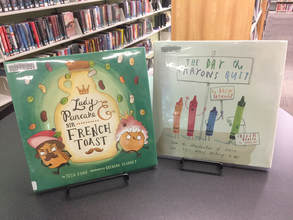 Board Books and Picture Books I’m a fairly visual person so I admit that the first thing that draws me to a board or picture book are the illustrations. They don’t need to be a certain style. In fact the good news in publishing for the very young is that there are many styles illustrators can employ that work effectively. Sure there’s a bit of mimicry here and there, but there are plenty of illustrators whose style is unique and distinct. So, yes, I’m drawn to the illustrations. That said, there’s nothing more disappointing than a picture book which delivers on the illustrations but is weak on storyline and content. The words do matter. When I was a Children’s Librarian and hosted storytimes I have to say I gravitated to titles with less text (kids can only sit still for so long). The books I liked most in those situations were the ones that “brought the silly.” Mo Willems, Jules Feiffer, Jon Agee, and Jan Thomas were always a hit. If a book could bring the silly and convey a lesson, well, all the better. Some books with more text did work during storytimes (Tomie DePaolo’s Strega Nona and Michelle Knudsen’s Library Lion worked far better than I imagined, Marla Frazee’s books were great too), but those instances were rare. What have I seen too much of in storybooks the last few years? Dragons, dinosaurs, princesses, penguins, mice, and bears. Don’t get me wrong, we still purchase titles with all of the above precisely because they circulate, but there’s entirely too much of it. And I do like anthropomorphism (Valeri Gorbachev and Peter Brown’s humanized animals are favorites of mine), but give me characters, animal or otherwise, I don’t normally see. Give me Lady Pancake, Sir French Toast, and Crayons that quit. I’ll likely take notice. Easy Readers and Early Chapter Books Some authors like Jan Thomas and Mo Willems have successfully moved into easy reader territory and we carry their titles. What’s nice is they continue to do work that isn’t text-heavy. I’ve found that text-heavy easy readers have a very limited appeal. If a child is looking for more text often they just move up to early chapter books like Nick Bruel’s Bad Kitty series or Doreen Cronin’s Chicken Squad books. Illustrations still matter in easy readers and early chapter books. In fact more and more books from both these categories seem to be taking a cue from graphic novels incorporating full page panel layouts, word and thought bubbles and other comic book devices. Scholastics’ line of early chapter books called Branches does this very well. They’re intended as a bridge between leveled readers and regular chapter books. Kung Pow Chicken, Monkey and Me, and Owl Diaries are all Branches titles that kids gravitate to here at the library. There’s plenty of text, it’s just that it’s often presented in comic book format with splashy engaging illustrations. What would I like to see more of in easy readers and early chapter books? I’d like to see more nonfiction easy readers and rebus readers where pictures occasionally take the place of common nouns throughout the story. Based on patron requests there’s a demand for both. I’d also like to see early chapter books with a bit more heft and content to them. The great thing about series like J.C Greenburg’s Andrew Lost or Osborne’s Magic Tree House is that you learn something in the process. Juvenile Fiction With Wimpy Kid, Big Nate, and the Dork Diaries series you’re seeing hand-drawn diary and graphic novel techniques infiltrating juvenile (chapter book) fiction too. It’s clear publishers think kid culture is much more visual now and, based on readership of those series and others, it’s hard to argue they’re not right. We purchase all of the above and countless other series. Realistic fiction titles (school stories, family stories) seem to be on the increase due to the popularity of the Wimpy Kid and Dork Diaries books. Most juvenile fiction series (and, believe me, publishers are obsessed with making everything into a series now) fall into the fantasy and adventure categories though. I loved the Harry Potter series but so many publishers started to roll out fantasy series during and after Harry hoping to “catch lightning in a bottle” that the result was a fair bit of forgettable fiction, though authors like Rick Riordan, Brandon Mull, and Pseudonymous Bosch capitalized. Bosch’s Secret series and Mull’s Fablehaven books are both very worthy and most everyone knows what a hit Percy Jackson has been with younger readers. What’s lacking in juvenile fiction? I don’t think there are enough mystery and compelling historical fiction titles written for preteens. Every so often a series like I Survived stokes the imagination of young readers, but it doesn’t happen enough. More sports novels for girls would be helpful too. Mike Lupica, Tim Green, and John Feinstein write excellent sports novels, but they feature boy protagonists in male-dominated sports. 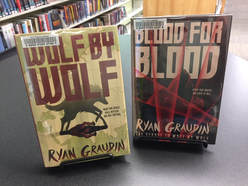 Young Adult Fiction In my twelve years at the library no one area has grown so much as young adult fiction. The number of titles has grown and the category itself has matured. I think YA fiction suffered under the assumption that much of it was bleak and focused on hyper-dysfunctional families and relationships. There is a percentage of it that still does (and dysfunction provides drama), but I see authors taking more chances with genre now. Yes, YA literature had its vampire and werewolf phase (thanks Twilight) and it still clings desperately to its Hunger Games-inspired dystopias. Veronica Roth’s Divergent series, Alexandra Bracken’s The Darkest Minds, and Neal Shusterman’s Arc of the Scythe series all mine this territory and do it fairly well. But I like when an author takes an even bigger chance like Ryan Graudin does in Wolf by Wolf and its sequel Blood for Blood, novels that take place in Nazi Germany and feature a girl protagonist who is also a shape-shifter intent on assassinating Hitler. It sounds like a lot to swallow, and it is, but Graudin pulls it off beautifully. If an author is going to imagine an alternate world I like it when they go all in. Thankfully more of that is happening. There is still plenty of room, of course, for realistic and topical teen fiction. I’ve been happy to see more teen mystery and suspense titles recently and it’s nice when historical fiction series like Laurie Halse Anderson Seeds of America books receive recognition and a devoted readership. I’ve also been particularly pleased that recent multicultural titles like Angie Thomas’s The Hate U Give and Tomi Adeyemi’s Children of Blood and Bone have found a wider audience. In truth there is so much good stuff out there now for children and teens to enjoy. Some of the best work being done right now across the juvenile and teen book landscape is in graphic novels. Shaun Tan, Gene Luen Yang, Raina Telgemeier, Noelle Stevenson – I could go on ad nauseum about the brilliant work they’re doing. Perhaps another time. Right now I have orders to place, so if I could kindly ask that publishers sit back and take a short break? I really need to catch up! The Taft Public Library is located at 29 North Avenue in Mendon, MA.
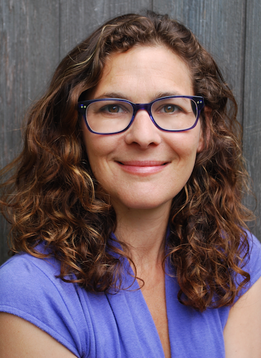 Guest Post By Alison Goldberg As I started thinking about this post, I asked critique partners and friends for their questions about promoting a debut picture book. In addition to nuts and bolts questions about swag and event planning and blogs, one person asked: What if you (secretly) don’t want to promote? And I kept thinking about this question, since it underlies a lot of conversations I’ve had with writers on this topic. For many of us, creating a promotion plan for a first picture book can feel intimidating, at times overwhelming. It requires diverting precious time away from writing and/or illustrating. The activities involved may demand a different set of skills from the ones honed to polish a manuscript for publication. Just the idea of marketing ourselves can be challenging, and for the introverts among us, particularly exhausting. My first picture book, I Love You for Miles and Miles, released from Farrar, Straus and Giroux on December 26, 2017. During the past year I’ve tried several different strategies to promote my book. I have also not tried several different strategies to promote my book. There are countless ways to tackle book promotion. As I reflected on this question, I realized that a big part of making this process feel manageable, accessible, and worthwhile—something that I actually wanted to do--was to come up with my own goals for success. Book promotion isn’t just about trying to sell more books, but I think sometimes the resistance to promotion is the feeling that’s the only thing we’re supposed to be doing. But there are so many other reasons to leverage the opportunity of a book launch to promote--especially as a debut. It can be empowering to redirect our focus to goals that support our ongoing careers as published authors, help us develop new skills, strengthen our communities, and connect us to kids, families, librarians, booksellers, and teachers. Just like each of our writing journeys will vary, each of our book promotion paths will vary. What do you hope will happen when you send your new book out into the world? Who do you want to share it with? Who do you want to connect with? What skills do you want to develop? What steps can you take with your debut that will help you launch your next book? How can you use the opportunity of this book launch to support your community? 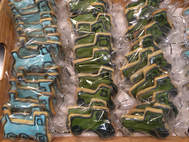 When launching a picture book debut, I think it’s worth taking the time to step back and come up with book promotion goals that feel true to you. As an example, I share my book promotion goals below. Your plan can be as big or as small as you want it to be. It can involve a whole team of people or just a few. It can involve lots of cookies or no cookies at all. The important part is that it includes what you want to do. My Book Promotion Goals: 1) Develop infrastructure for my writing business As a new children’s writer, I had invested a lot of time and resources in developing my craft, far less in developing my writing business. One goal was to use the opportunity of my launch to create more business infrastructure. What did this look like for me? I overhauled my website, and created contact lists for email outreach to friends and family and a postcard mailing to bookstores and libraries. All of this was pretty time consuming, and the website was resource intensive, but these things will be in place for my next book launch too. 2) Tell my story as a debut At every step in my writing journey I have read the profiles of writers, often in the form of blog posts hosted by other writers. Another goal I had was to tell my story as a debut in order to give back to this supportive children’s writing community with content of my own. This was easy to do, free, and great preparation for a media interview request when it came along. (Here are those posts and interviews.) And telling my story as a debut connected back to my goal of developing business infrastructure. I wanted to establish a greater presence online to make it easy for potential readers, reviewers, and editors to learn more about me as a writer. 3) Connect with my local bookstores and libraries. I love my local indies. I love my local library. A big part of my excitement for launching my book was the chance to connect with and support bookstores and libraries in this new role. I prioritized events in these venues and this has been a highlight for me--a chance to get to know more bookstores in my area and share my book (and crafts and cookies) with kids and families. 4) Expand my writing community I found that launching a debut was a terrific opportunity to meet more children’s writers. I joined an amazing debut group, Picture the Books, and connected with other writers and illustrators with 2017 picture book debuts. We shared information and strategies, circulated advance copies, and supported each other throughout our debut year. I also connected with agent-mates with 2017 release dates and a broader community of writers on social media. I knew that my events would be more fun for me if I planned them with other picture book creators. Expanding these networks helped me to find authors and illustrators to team up with. 5) Support an issue I’ve been involved in the Campaign to End Childhood Hunger for decades and saw the opportunity of my picture book launch as a chance to raise some money and exposure for this work. I included this information in my book trailer and on my website, and I’m exploring ways to build this support into future events. 6) Experiment Finally, I had a goal to experiment with strategies throughout the year, to stretch myself and learn about a variety of tactics for my next book launch. For example, even though I decided I wouldn’t plan school visits for this release, I volunteered to lead a storytime at my children’s former preschool to learn more. Since I was curious about the potential reach of a book trailer, I went to conference workshops for advice and ended up working with an animator to make one. I’ve never participated in a book festival before so I recently sent in some applications. 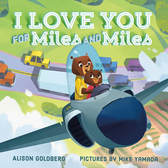 Alison Goldberg is the author of the picture book I Love You for Miles and Miles, illustrated by Mike Yamada (Farrar, Straus and Giroux, 2017). Before becoming a children’s writer, she worked for economic justice organizations and co-wrote the resource guide, Creating Change Through Family Philanthropy: The Next Generation (Soft Skull Press, 2007). To learn more about Alison visit her website at alisongoldberg.com/ To purchase I Love You for Miles and Miles go to: www.indiebound.org/search/bookkeys=i+love+you+for+miles+and+miles or www.amazon.com/I-Love-You-Miles/dp/0374304432/ref=sr_1_1?ie=UTF8&qid=1528207432&sr=8-1&keywords=i+love+you+for+miles+and+miles Signed copies are available through www.portersquarebooks.com/alison-goldberg  We are thrilled to welcome Rob Broder, co-founder of Ripple Grove Press, to 24 Carrot Writing. Ripple Grove Press is an independent, family-run children’s book publisher. Their list includes picture books like the award winning Grandmother Thorn, Seb and the Sun, and Monday is Wash Day. I had the chance to meet Rob at the book launch of Ripple Grove Press’s newest picture book, Iver & Ellsworth. The book was in hot demand and luckily Rob had extra copies in his car! Ripple Grove Press is looking for its next book and Rob graciously offered to share his thoughts on the submission process from the publisher’s side of the desk. 1. Can you talk about the unique perks and challenges of being a family run independent children’s book publisher? Since it’s just Amanda and myself doing everything to run Ripple Grove Press, we face challenges with reaching as many bookstores, libraries, and parents as possible. We don’t have a separate marketing team. We are the marketing team. So while reading submissions, promoting our current and backlist titles, communicating with our printer and distributor and working on books for next year, we do wish we had some extra hands helping out. But we love it, and the best perk is finding that next writer and illustrator we are passionate about, who has a wonderful story we resonate with. 2. Querying writers, who are looking for publishers, sometimes forget that publishers are looking for them too! And while groups of writers can often be heard discussing the angst of having a manuscript out on submission, what is the process like for the publisher on the hunt for the next great manuscript? For us, it’s just going through the hundreds of email submissions we receive a month and finding one that just clicks. Perhaps one where I like the title, I like the first few lines and then I just keep on going. 3. While writers understand that the volume of submissions received by editors makes it unfeasible to respond to every submission, how can a writer know the difference between a complete miss as opposed to a submission that was very close? Writers are willing to put in the work, but sometimes it is hard to know if a submission is just not quite a good fit for a particular editor or if it is in need of major revision. There have been times where I love the story, but it’s just not for us for some reason. I want to reply to that person and say, “Your story is great. But do you have something else?” or “Keep writing and you’ll get there.”. But I just don’t have the time. And if I reply, it might give the wrong signals to that person. With RGP, as long as the person follows our submission guidelines, I want them to know your story has been read and considered. 4. When you get excited about a manuscript, you are also deciding to get excited about the author. Could you describe the ideal prep work an author should do before submitting to Ripple Grove Press, both in terms of working a draft to a submission ready place and in preparing themselves to be knowledgeable about the industry? Yes, please be professional. Please be open to editorial suggestions. We become just as passionate as you are about your story and we are working together to make the most beautiful book, the most wonderful story possible. So please have an open mind. Be knowledgeable about children’s picture books. If you don’t read current and old titles, it will show in your writing and your professional etiquette when discussing picture books. 5. Once a writer has revised a manuscript and taken it through a cycle of feedback from critique partners, what other steps can and should an author take to make sure the manuscript is submission ready? Have a close friend read the story out loud to you. But with emotion. What and where does your friend think certain words should have emotion. When should they shout, or whisper, and perhaps make your voice sad. It really helps hear where your story should be from another perspective. 6. Sometimes the best way to learn is by example. Can you share examples of opening lines that made you excited to keep reading a submission? And what are some opening lines that made you put the submission down before you finished the manuscript? If the opening line has a good simple narrative, it usually resonates with me and I want to keep reading. Like: Ellsworth is a rooftop bear. or Grandmother Thorn lived in the very first house on the very straight road to Shizuoka Village. or Rain or shine, Monday is wash day. or The gentleman bat, with his gentleman’s cane, went out for a walk one night in the rain. or Seb lived in a sleepy coastal town far in the north. These first lines hooked me. They told me a story before I even continued on with the manuscript. Opening lines that sometimes make me stop reading are: Once upon a time . . . Once there was a . . . Hi, my name is . . . Have you ever wondered . . . ? “Mama, do you love me. Yes, of course I love you.” (if I see page breaks) One day, One evening, Long ago and far far away . . . Hi, I'm Clothes Pin and this is my friend Lamp Post. I just made that up, but hopefully you get what I’m saying. 7. At the end of the day, it’s all about the writing. But, where does the query letter fit in? Do you read it first? Second? What do you really want to see in that query letter and what do you never want to see? It is all about the writing, so I do go straight to the story. The main reason for that is I don’t have time to read every query and submission together. I wouldn’t get through my pile. If I like your story, I absolutely read your query. I open every submission hoping to say “Yes! This is it!” And sometimes, I get excited about the query because it’s so well-written, but then the manuscript doesn’t have the same feel as the query. I’d like to get excited about your manuscript first, instead of getting excited about your awesome query. 8. Can you share the journeys that brought Iver & Ellsworth and/or Grandmother Thorn from submission discovery to published book? These two stories came to us through our submission inbox. And when a story gets moved over to our “Lets Discuss” folder, it . . . well… gets discussed. We read it over and over before contacting the author. We read the story to ourselves, we reread it out loud, we read it with the emotion we feel it should have. We talk about alternate endings, even if we don’t change the ending, we always say “what if this happened.” just to see how it sounds. We discuss what type of art we see with this story. We go for walks and visualize how this book might look. We usually like stories that capture a moment, and both of these stories do. Proud to say, Grandmother Thorn won the 2018 Anna Dewdney Read Together Award Honor. 9. Seb and The Sun is a companion book to Jami Gigot’s debut picture book Mae and the Moon. How is the submission process different for an established author? Does Ripple Grove Press actively look to publish multiple books by the same author? Mae and the Moon at the time was our best selling and most reviewed book. And when Jami approached us (actually had a celebration drink over Mae and the Moon) about a companion book titled Seb and the Sun, it was just a concept at the time. I boy collects bottles, in a dark coastal town and searchers for the sun. Since we loved working with Jami, we knew how the process was going to be. So we asked for a rough draft and some sketches. It came together beautifully, earning three starred reviews and becoming our most reviewed book to date. So yes, building a strong relationship helps. We know how hard you work to make the book, but it also helps to know how hard you work promoting the book and yourself. 10. In September, Ripple Grove Press is releasing Paul & His Ukulele written by you! How wonderful! What made you decide to become an author? How has the process of writing and publishing your book informed or changed your approach? 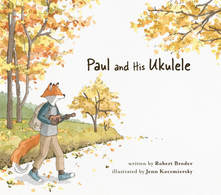 I’ve always written a bit here and there over the years. When something comes to me I jot it down. And since starting RGP, I have read so many submissions, that I wrote down a story about a boy who receives a ukulele. Perhaps because I wasn’t seeing a simple ukulele story submitted to us. And when I showed the story to Amanda, she liked it. And when we saw Jenn Kocsmiersky’s portfolio, I said what if Paul was a fox and not an actual boy… and it fit. It worked. Thank you Rob for sharing your publishing insights with 24 Carrot Writing.
To submit to Ripple Grove Press, please read their books and visit RippleGrovePress.com. Be sure that your manuscript has the intellectual charm that is the hallmark of Ripple Grove Press books. And from now until August 31, 2018, Rob Broder has generously offered to give manuscript submissions from 24 Carrot Writing Facebook members special attention. Please visit the 24 Carrot Writing Facebook page to learn about this kind offer. Rob has also started a Storybook Consulting service where he has been helping people get their picture book story to where they want it to be. Please visit RobertBroder.com for more info. To order Ripple Grove Press books please visit www.ipgbook.com/ripple-grove-press-publisher-RGP.php. 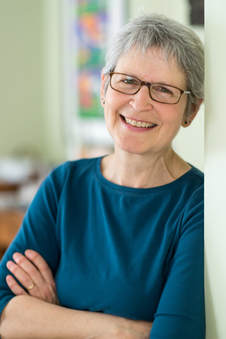 Guest blog by Ellen Mayer We are excited to introduce author and early literacy specialist, Ellen Mayer to our 24 Carrot Writing family. Ellen is the author of the Small Talk Books collection published by Star Bright Books that includes Red Socks, A Fish to Feed, Cake Day, Rosa's Very Big Job, and Banana for Two. She is a member of the TERC Storytelling Math community, a former education researcher at Harvard Graduate School of Education studying how families engage in children's learning, and she worked as an early literacy specialist with diverse and immigrant young children and their parents. We've invited Ellen to share her knowledge of writing math-related fiction picture books for children. Enjoy! Interested in trying your hand at writing a math-related fiction picture book for preschoolers? As many kidlitters may know, publisher Charlesbridge recently issued a call for submissions as part of the Storytelling Math project, (https://www.charlesbridge.com/pages/storytelling-math-guidelines) seeking manuscripts for fiction picture books that weave together engaging story lines, mathematical themes, and diversity. The Storytelling Math project is spearheaded by TERC, the non-profit STEM education center in Cambridge, MA (https://www.terc.edu/display/Projects/Storytelling+Math) and is funded by the Heising-Simons Foundation. I was a participant in the pilot phase of the project that included publisher Star Bright Books, and I created two playful math-infused board books for under-threes with diverse characters. Banana for Two features a toddler learning about amounts of one and two with Mama while they shop for groceries and then share a snack together. Clean Up, Up, Up! features a toddler learning about spatial relations with Daddy as they clean up the toddler’s room together and then sit down to dinner with Mommy. Both have stunning art by the illustrator Ying-Hwa Hu. Here are some of my own takeaways from that writing experience, focusing just on the issue of incorporating math in the story. Mind you, this is based on a sample size of one. But perhaps what I learned might inspire (or at least reassure) you as you consider tackling a story with inherent math. #1 No math PhD required! Like many, I have a complicated relationship with math and a certain amount of math trepidation. As I learned more about what early math entailed for preschoolers, though, I felt less anxious. Early math is not rocket-science level stuff. Little ones are doing math when they line up different food pieces in a pattern across their mat, find it amusing that they have a foot for each of the two socks in a balled up pair, or build a block structure that’s bigger than they are. I also reframed my fear and made it work for me: the project after all was trying to reach math-phobic parents, and I knew how they felt! #2 Read parent digests on young children’s mathematical development from leading education organizations. Check out the early math resources available from Erikson Early Math Collaborative, NAEYC, PBS and Zero to Three. These organizations distill the latest research and describe children’s mathematical development over the 3-6 years age span. Stick with parent resources as opposed to classroom ones for teachers that focus on the math as taught in the classroom: You’ll want to focus on the kid-centered math as learned in out-of-school settings. You’ll also want to be developmentally appropriate when you approach your story: How children engage with the topic of measurement, for example, is somewhat different at 3 than 6. Information from these sources can help you delve deeper and also stay on solid footing. #3 How to begin writing? I’m sure there are many ways to visualize this journey, but after creating my little books and drafting some other math-infused manuscripts, I think of three basic ways to start. With your new early math lens from #2, you could begin thinking about that story idea you’ve been kicking around. Or, you might realize that one of those manuscripts you stashed away in your drawer for another day might have some inherent math in it that can be teased out. Finally, you might start with a math prompt, whether it’s one of the math topics listed in the open call or some more detailed information available from your digest review. #4 How will my story engage families in early math? As a former early literacy home visitor with diverse and immigrant populations, I think a lot about how books can be written, illustrated, and designed to draw in families and stimulate conversation both during and after book sharing. One of the goals of Storytelling Math is to create books that will stimulate conversation full of math talk. This means thinking about the parent audience as a very important second audience for your story. Each of my books contains a parent note written by an early math expert that helps parents become aware of the math in the story, but note aside, I suggest that you approach your writing process here with this meta-charge in mind. Family engagement needs to be baked into the text. In my two books, I did this mainly by having the parent character in the story model for the parent reader some ways to engage in playful math talk with a toddler. #5 What – a math art note?*!? If you’re like me, you literally lose sleep over the art note. Include or no? If yes, how to make it succinct with only the absolutely necessary information? In my stories I actually enjoyed this added layer, of thinking intentionally about how the math in the story might drive the art. In the case of that story about one and two at the grocery store, it meant art with plenty of opportunities to count items of one and two (look in the grocery cart), but where no items were countable beyond two (see the blurry bunches of bananas)! Much of the math art notation came later in the process though, when I had an accepted manuscript and had started working with the Storytelling Math project “math editor” (in addition to my Star Bright Books editor). We all know that picture book editors tend to look askance on the art note and certainly the lengthy one when they receive a submission. However, I found it valuable during my drafting of the stories to include math art notes just for myself. I think this helped me get into that math-infusion zone. Ready now to try a new writing challenge this summer? Submissions are due by September 1! To learn more about Ellen and her various books for children, visit her website at www.ellenmayerbooks.com. To learn more about publisher Star Bright Books’ Math Around Us work, book collection, and fun book-related math activity sheets, see: https://starbrightbooks.com/blog/category/math/ and https://starbrightbooks.com/index.php?id_category=105&controller=category To order Banana for Two and Clean Up, Up, Up! please follow these links: Ellen's books are also available on B&N, Amazon.
Photo credits: Mindaugas Sereiva Illustration credits: Ying-Hwa Hu 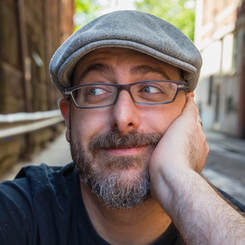 Photo credit: Carter Hasegawa Photo credit: Carter Hasegawa ~ By Josh Funk Marketing. What are my thoughts on marketing a picture book? Where do I start? What would I tell an author who has a debut book coming out? That’s a loaded question, so I apologize in advance for the long post! #1: Start Early We all know it takes about two years (give or take) for a debut picture book to be released once it’s acquired. Those two years are precious - use them wisely! Spend that time growing your network. One way is to go to as many author events at bookstores as you can. And here are four whys:
Another thing to do is to get on social media - and grow your virtual network. There are pros and cons to all of the different social media platforms (Facebook, Instagram, tumblr, etc), but my preferred platform is Twitter. As a picture book writer, my direct audience (children 0-10) is not on social media. (This is different if you write YA - I can’t speak about interacting directly with your readers.) I love Twitter because it’s a great place to connect with educators, bloggers, booksellers, parents, and other writers and illustrators. How do you grow your network when your book is still two years away? Follow people in the industry and see what they tweet and what they talk about. Twitter is like a worldwide cocktail party where everyone’s invited - and anyone can join in on any conversation at any time. Follow educators like Pernille Ripp, Margie Myers-Culver, & Melissa Guerrette. Follow bloggers like Jen Robinson, All the Wonders, & Mr. Schu. Follow bookstores like Porter Square Books, Vromans, & Octavia Books. Follow writers like Tara Lazar, Phil Bildner, & Linda Sue Park. Follow illustrators like Girllustrators, Don Tate, & Debbie Ohi. Follow organizations like IndieBound, American Library Association, & SCBWI. But what do you tweet and share? If you have a blog (which you don’t NEED to have), tweet out those links. Read blog posts and articles that the above people write and tweet - and share the links that resonate with you. If someone you know sold a book or has a book birthday, congratulate them! And tag people. Positive vibes and good will go a long way. And just maybe, when you start connecting with people on Twitter, they might click on your name and website (more on that below) and they’ll see you have a book coming out yourself. Your book is now on their radar. You’ve planted the seed. #2: Prep for Launch Make sure you have a solid and easily navigable website. There are lots of resources out there regarding what your website should have. Look at other writers’ websites and see what you think will work for you. I use Wix to design mine, but there are lots of options. My chosen website categories are as follows: ●Home - the landing page. ●Books - a list of all of my books (each with a sub-page dedicated to that specific book). ●Stuff for Kids - a kid-safe page with fun stuff. ●Schedule & Appearances - a list of everywhere I’m going (and a map of everywhere I’ve been). Make sure to keep this up to date so your fans can follow you. ●Author Visits - a place where teachers can connect with you to bring you to their schools (remember, teachers call them Author Visits even if writers call them School Visits - so make sure to speak their language, since they’re the ones who will be looking at your site). ●Resources for Writers - my 12-Step Guide to Writing Picture Books - AKA the link I send to people when a Facebook friend tells me their cousin wrote a picture book and do I have any advice for them? ●About - a page with my bio, headshots, how to contact me, an interview archive (which will soon include this link), and social media links. ●Blog: I do have a blog to which I try to post at least once a month. Other things I’ve done pre-launch include: ●Newsletter: I have a newsletter (sign up here!). Some people say they’re critical. For a picture book author, I’m not sure. But it doesn’t hurt to have one and post to it a few times a year, especially when you have big news. ●Book Trailers: I've created all of my own book trailers, often along with songs I've written and recorded (on my phone, nothing super fancy - but technology today is awesome). ●Activity Kits and Coloring Pages: I've been fortunate that Sterling Publishing has made Activity Kits to go along with the Lady Pancake & Sir French Toast books. Michael Slack and Rodolfo Montalvo each made coloring pages for Pirasaurs! and Dear Dragon, respectively. If your book’s illustrator or designer is willing to strip the color out of some of the images, it’s an easy, free, printable bonus to offer your readers (and to bring to events). ●Online Quiz: I created a Which Pirasaur Are You?! online quiz. I’m not sure how much payoff this had. #3: The Book Launch If you’ve been patronizing and networking with your local booksellers, hopefully you’ll have an opportunity to schedule your book launch at one of them. Invite everyone you know. Jarrett J. Krosoczka once described his debut book launch as similar to a wake, but where no one died. More people will show up out of the woodwork than to a wedding. Some people create Facebook events for book events (I sometimes do), but for a book launch, especially your debut, it might be worth sending out an actual (online) invitation to your email contacts in addition to friends in your online social networks. Regarding swag, I’ve had fun making some. If you’re lucky, your publisher may make some of their own and share with you. It also doesn’t hurt to ask if they’ll reimburse you for making your own.
Definitely offer food. Bring all the swag you have. Make it a party! And congratulations! #4: My Book Is Out. Now What? The best advice I received (from author Jen Malone and probably others) is: Do what you like. How do you know what you like? My answer to that is: Try everything. Store events, library events, conferences, group events, solo events, school visits, school book fairs, nErDcamps, farmers markets, karate studios (if your book is about ninjas), etc. - do them all. Determine what you like and what you don’t - and then continue doing the ones that appeal to you. If you’re fortunate (or there is a conference in your area), your publisher may invite you to do a signing (ALA, ILA, NCTE, ABA, BEA - if you don’t know what these are, look them up and learn them). Keep sharing on social media. If you’ve developed relationships with bloggers, see if they’re interested in interviews (or even giveaways). You can also set up Goodreads giveaways (these are often done pre-launch). There’s no magic bullet to a book’s success. My trailers on YouTube have a few (under 5) thousand views - nowhere near viral. I’ve still got a few boxes of Pirasaurs! collector’s cards in my basement. Who knows if my Twitter network has affected sales (it’s impossible to really tell)? I’ve been to events where nobody showed up. But when you add it all up, the more times my book covers are on a poster at a library or in a tweet or a newsletter or a guest blog post (see what I did there?), the better the chances that the next time someone sees one of my books at a bookstore, they might just give it a second look before walking by. #5: Beyond Keep in mind that much of the sales success of your book is almost entirely out of your control. The reality is that for a book to do really well, the publisher has to seriously get behind it. The publisher’s marketing and publicity teams need to be excited about it to feature it at the bookseller expos which will in turn get their salespeople excited about it so it gets into bookstores and get their school & library teams excited about it to share it at education conferences and so on. I don’t write that to discourage you from doing marketing. If the publisher only has moderate expectations, YOUR marketing push could help exceed them! If you market your behind off, there’s a good chance your publisher will notice. It might make it easier to get your next book through acquisitions (remember, sales and marketing teams are at those meetings). It might mean they’ll give you a bigger marketing and publicity budget on your next book - and maybe your second book will get a bigger push at all of those expos and conferences. And with that network you built, those connections and friendships you made, and all those lessons you learned along the way - you’ll be that much more prepared for your sophomore effort. And don’t forget the most important thing is still: write a good book. 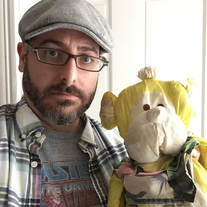 Josh Funk writes silly stories and somehow tricks people into publishing them as picture books - such as Lady Pancake & Sir French Toast and its sequel The Case of the Stinky Stench along with Pirasaurs!, Dear Dragon, It's Not Jack and the Beanstalk, Albie Newton, Lost in the Library, and more coming soon! Josh is a board member of The Writers' Loft in Sherborn, MA and was the co-coordinator of the 2016 and 2017 New England Regional SCBWI Conferences. He’s written a 12-Step Guide to Writing Picture Books, which is free and accessible on his website. Josh grew up in New England and studied Computer Science in school. Today, he still lives in New England and when not writing Java code or Python scripts, he drinks Java coffee and writes picture book manuscripts. Josh is terrible at writing bios, so please help fill in the blanks. Josh enjoys _______ during ________ and has always loved __________. He has played ____________ since age __ and his biggest fear in life is being eaten by a __________. Find more information about Josh at www.joshfunkbooks.com and on twitter @joshfunkbooks. 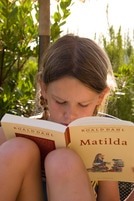 By Annie Cronin Romano Oh, the lazy, hazy days of school vacation! On this first day of summer, what could be more fitting than gathering up some picture books with Fourth of July and summertime themes? (Besides slathering on the sunblock and hitting the beach, of course!) This list features picture books of varied reading levels for your child's summer reading enjoyment. Pick one or all of them and dive into stories of Independence Day or summertime rituals with your young readers! No matter what books you choose, keep the stories flowing all summer long! 4th of July themed stories: THE STORY OF AMERICA'S BIRTHDAY, by Patricia A. Pingry, Illustrated by Meredith Johnson FOURTH OF JULY MICE! by Bethany Roberts, Illustrated by Doug Cushman RED, WHITE, AND BOOM! by Lee Wardlaw, Illustrated by Huy Voun Lee APPLE PIE 4th OF JULY by Janet S. Wong, Illustrated by Margaret Chodos-Irvine IMOGENE'S LAST STAND by Candace Fleming, Illustrated by Nancy Carpenter INDEPENDENCE CAKE by Deborah Hopkinson, Illustrated by Giselle Potter THOSE REBELS, JOHN & TOM by Barbara Kerley, Illustrated by Edwin Fotheringham THE JOURNEY OF THE ONE AND ONLY DECLARATION OF INDEPENDENCE by Judith St. George, Illustrated by Will Hillenbrand Summertime themed stories: SUMMER DAYS AND NIGHTS by Wong Herbert Yee THE WATERMELON SEED by Greg Pizzoli MOUSE'S FIRST SUMMER by Lauren Thompson, Illustrated by Buket Erdogan DUCK AND GOOSE GO TO THE BEACH by Tad Hills HOW MANY STARS IN THE SKY by Lenny Holt, Illustrated by James E. Ransome ICE CREAM SUMMER by Peter Sis THINK COOL THOUGHTS by Elizabeth Perry, Illustrated by Linda Bronson MONSOON AFTERNOON by Kashmira Sheth, Illustrated by Yoshiko Jaeggi NIGHT OF THE MOONJELLIES by Mark Shasha Have some favorite summer-themed children's books? Please share them with us in the comments section!
~Annie 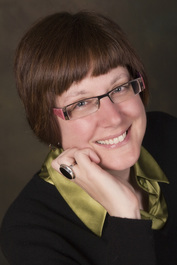 Guest Blog by: Pat Zietlow Miller Readers who adored Pat Zeitlow Miller's debut picture book, Sophie’s Squash, will be running to the bookstore today (June 28, 2016) to pick up a copy of its sequel, Sophie's Squash Go To School. Writers who adore Pat's work will enjoy this behind the scenes look at her path to first time publication and the sometimes scary route to a sequel. When I first wrote and sold SOPHIE’S SQUASH, I never envisioned I would write a sequel. Why? Well, SOPHIE’S SQUASH was the very first book I had sold, and I was thrilled just to have that happen. And I knew that most books by debut authors glow quietly rather than burn brightly. My hope was that SOPHIE would sell enough copies to earn back the advance I’d received and to ensure Schwartz & Wade wasn’t sorry they’d taken a chance on an unknown author. Also, while I know some authors write a book and already have future sequels mapped out in their head, I didn’t. I had no other adventures planned for SOPHIE, as charming and quirky as I thought she was. But then, then … SOPHIE’S SQUASH started doing better than anyone had expected. It never reached bestseller status, but it did fine. More than fine. Quite well indeed. It got four starred reviews, won or was a runner-up for several very nice awards and became something of a book darling. I started getting pictures from parents of their children holding butternut squash. Schools read the book and planned units around squash. One school even added a butternut squash as an honorary classmate. The squash had a name, a nap mat and several outfits and accompanied the class everywhere. I heard from parents whose children planted their squash and grew new squash plants and from several people who read the book to their elderly parents suffering from dementia and found it calmed them. Interestingly enough, when the book first was published, I worried that it would be too quiet and not stand out enough to make an impact. I remember asking myself, “But what’s its hook?” I didn’t realize the squash itself would become the hook. So when Schwartz & Wade asked if I had any sequel ideas, I said I didn’t, but I would think about options. That ended up being a lot harder than I anticipated. The first SOPHIE’S SQUASH had – if you’ll pardon the gardening pun – grown organically from my youngest daughter’s real-life infatuation with a butternut squash. All the pieces of the story were there. I just had to take some literary license to put them together. My youngest daughter is, if I do say so myself, a very funny kid who has had a dry, offbeat way of looking at life from the very start. So I went back through our favorite family stories about her looking for another gem – and found it. When she was in preschool, she came home very distraught because of a little boy who repeatedly tried to hug her and told her he was going to marry her. Three-year-old Sonia wanted no part of this plan and described to me everything she’d do to prevent a wedding from happening. I knew I couldn’t write a picture book about preschoolers’ marriage plans. But what if the annoying classmate just wanted to be friends, but Sophie felt that she already had all the friends she needed with her two squash, Bonnie and Baxter and had no interest? That might work. First, I had the story set around Valentine’s Day, but it quickly became apparent that a first-day-of-school angle worked much better. While I’m extremely happy with how the final book, SOPHIE’S SQUASH GO TO SCHOOL, turned out, it was much harder to write than the first. Why? First, I was writing on a deadline with not as much of a fully formed idea as the first time. Second, there was pressure. When I wrote SOPHIE’S SQUASH, I was unpublished and not sure I ever would be. When I wrote SOPHIE’S SQUASH GO TO SCHOOL, the first book had done well and I felt an obligation to not let Sophie’s fans, Schwartz & Wade or myself down. There were times I wasn’t sure I would pull it off. But, fortunately, I loved Sophie and her family. I knew them. And getting back inside their world and remembering all the great things about it made it possible for me to write a story I like as much as the first one. Whether others feel the same way remains to be seen, but I hope they do. Pat Zietlow MIller has also published The Quickest Kid in Clarksville, Sharing the Bread, and Wherever You Go. To learn more about Pat, her new projects and upcoming publications please visit her website http://www.patzietlowmiller.com/my-books by clicking the link below.
A big 24 Carrot Writing thank you to Pat for being a guest blogger and sharing her wonderful insight. I'm off to my independent bookseller to pick up my copy of Sophie's Squash Go To School! |
Peruse blogs for advice and tips from KidLit creatives.
Categories
All
Archives
April 2024
Click to set custom HTML
Click on the RSS Feed button above to receive notifications of new posts on this blog.
|
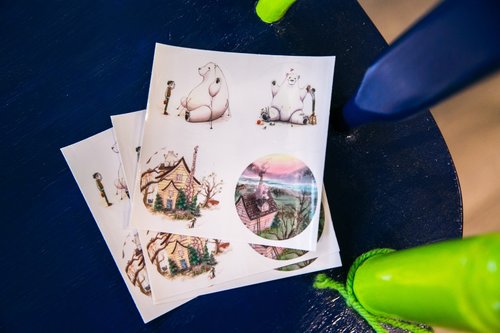
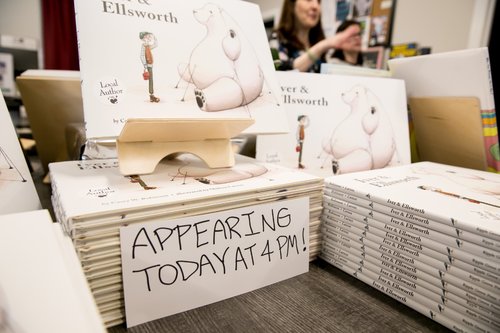
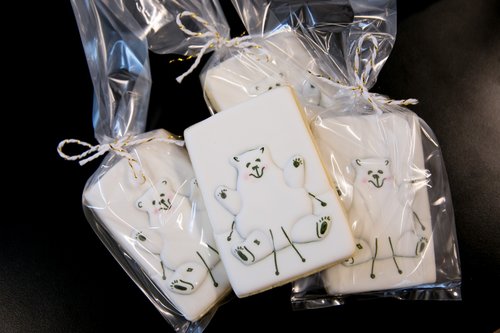
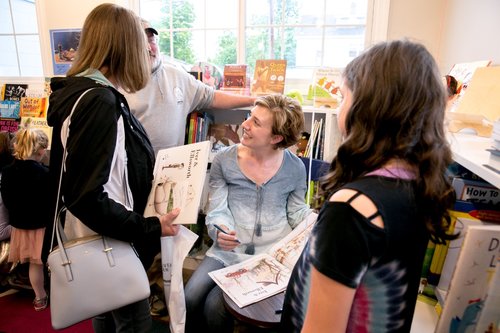
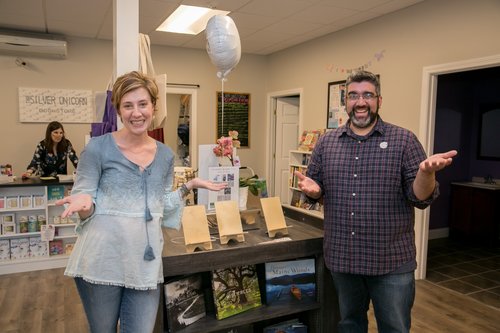
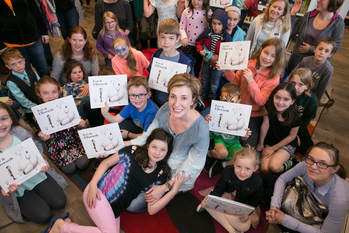
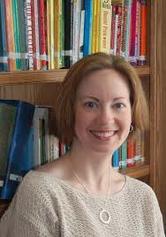
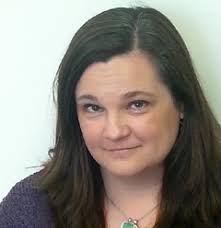

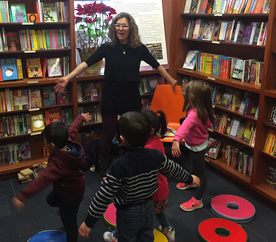
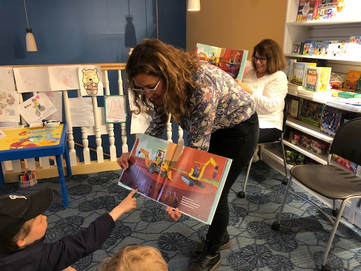
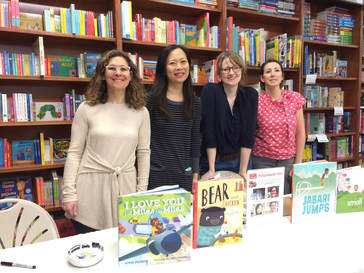
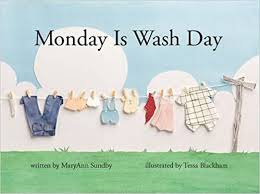
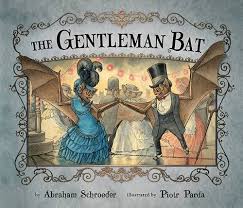
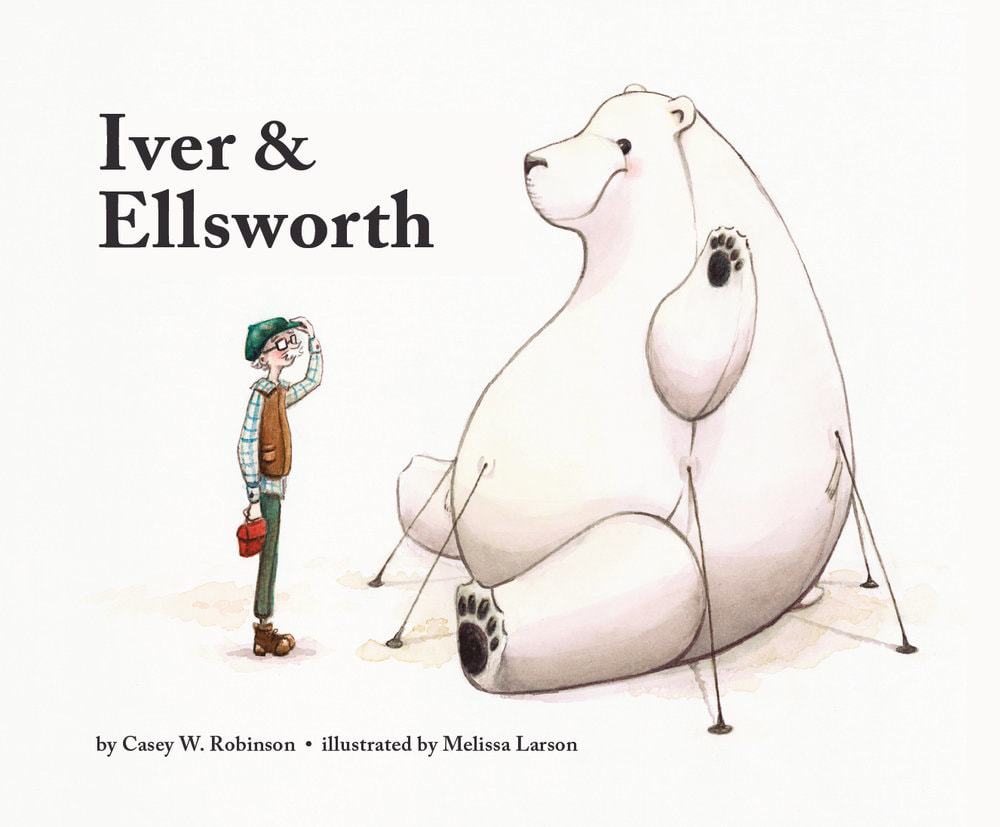
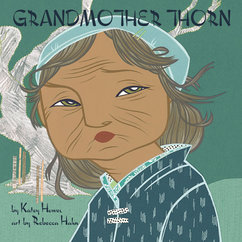
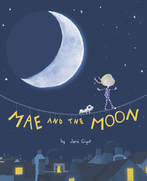
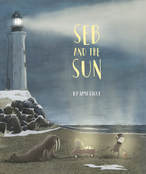
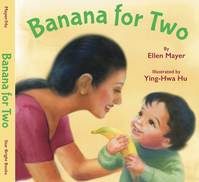
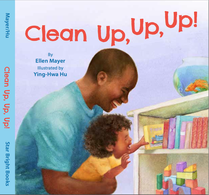
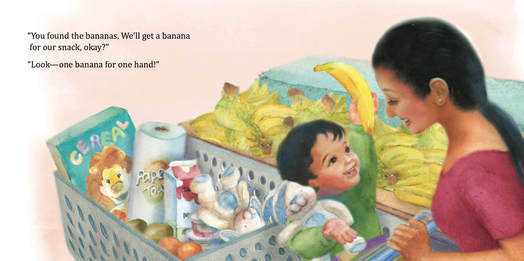
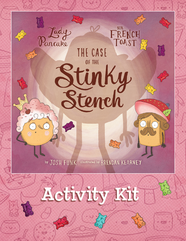
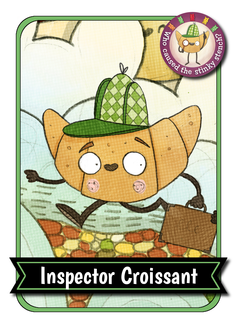
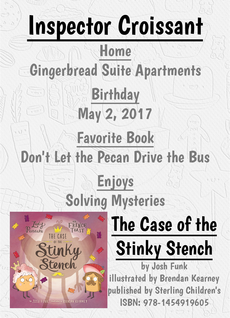
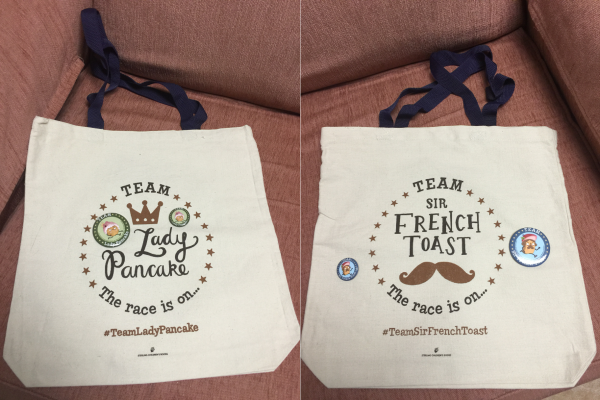
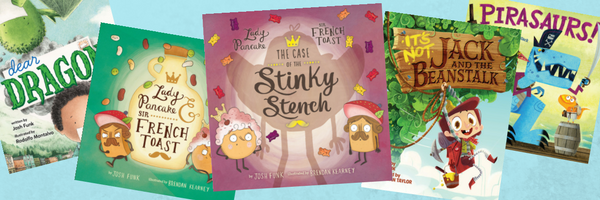
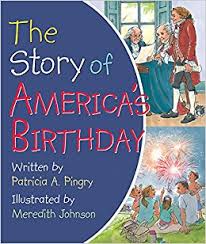
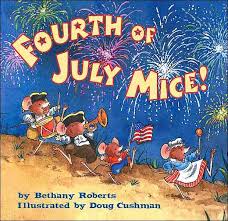
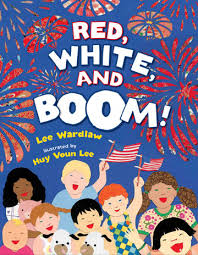
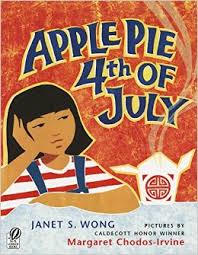
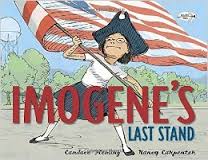
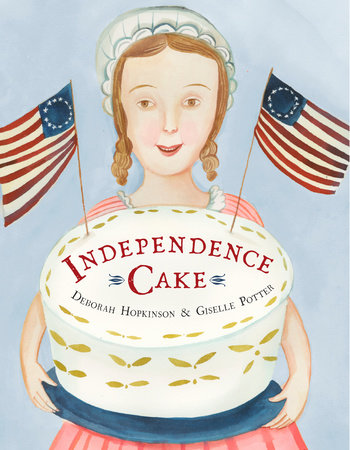
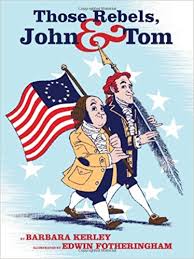
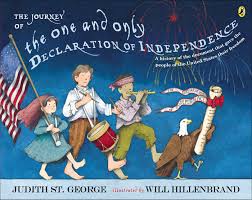
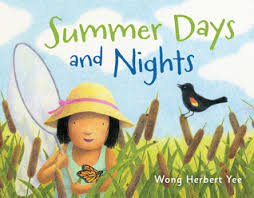
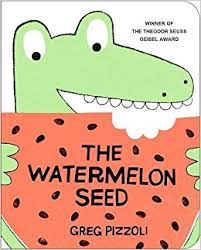
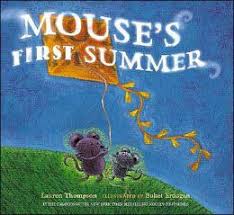
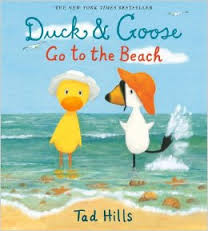
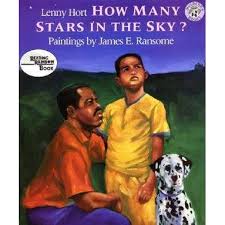
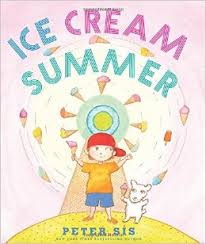
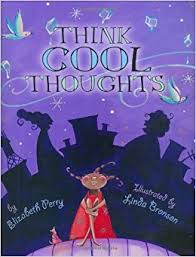
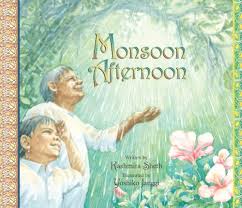
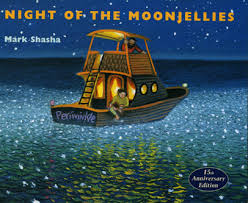
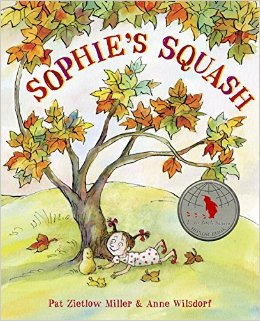
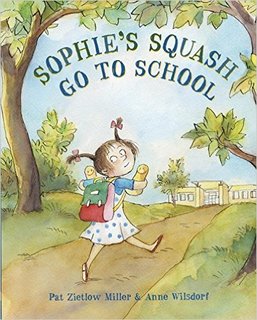
 RSS Feed
RSS Feed